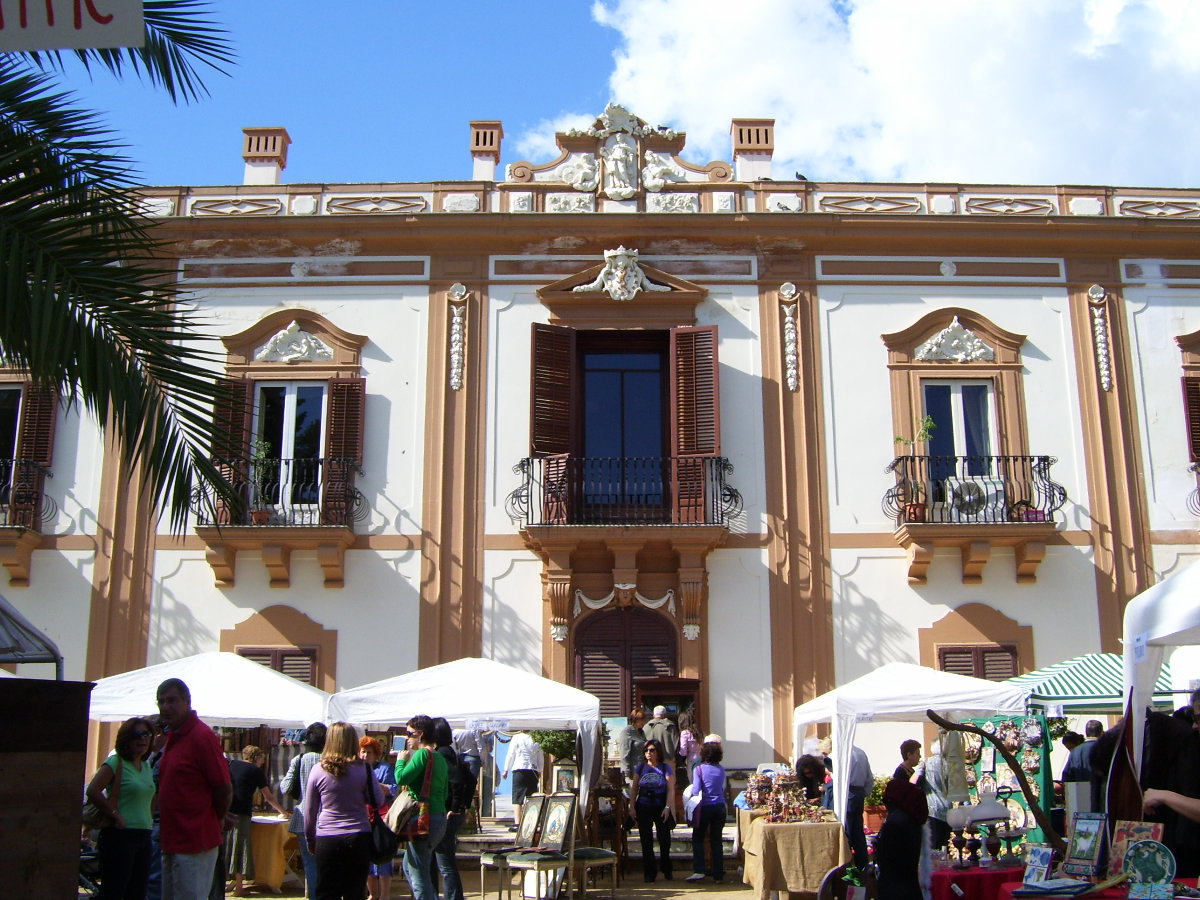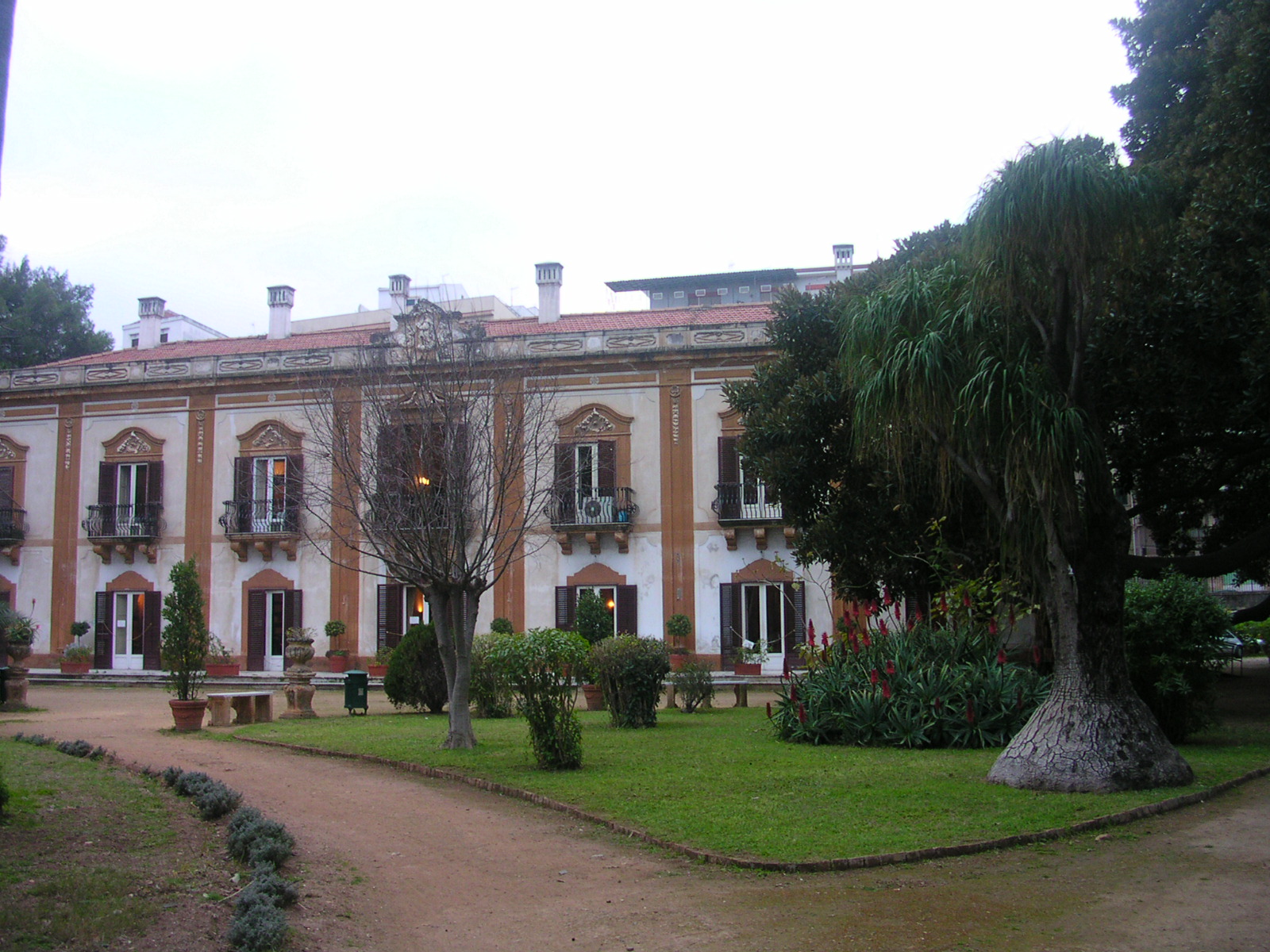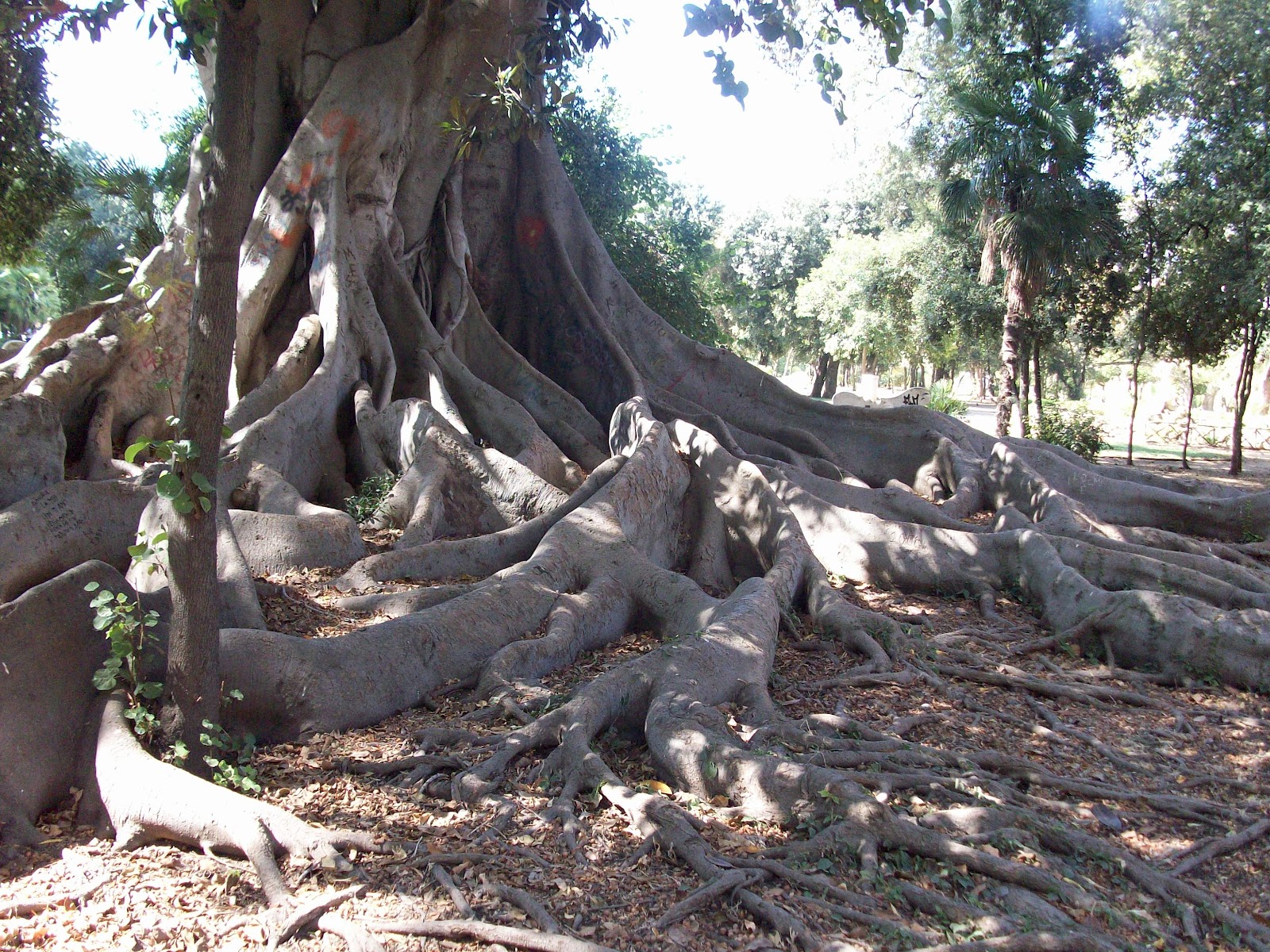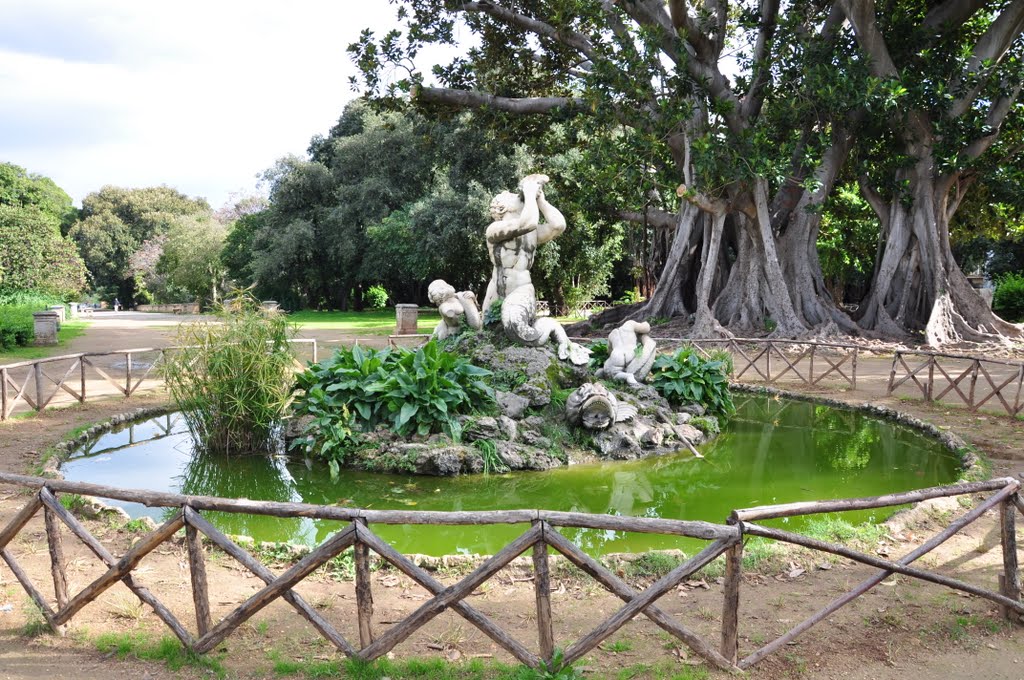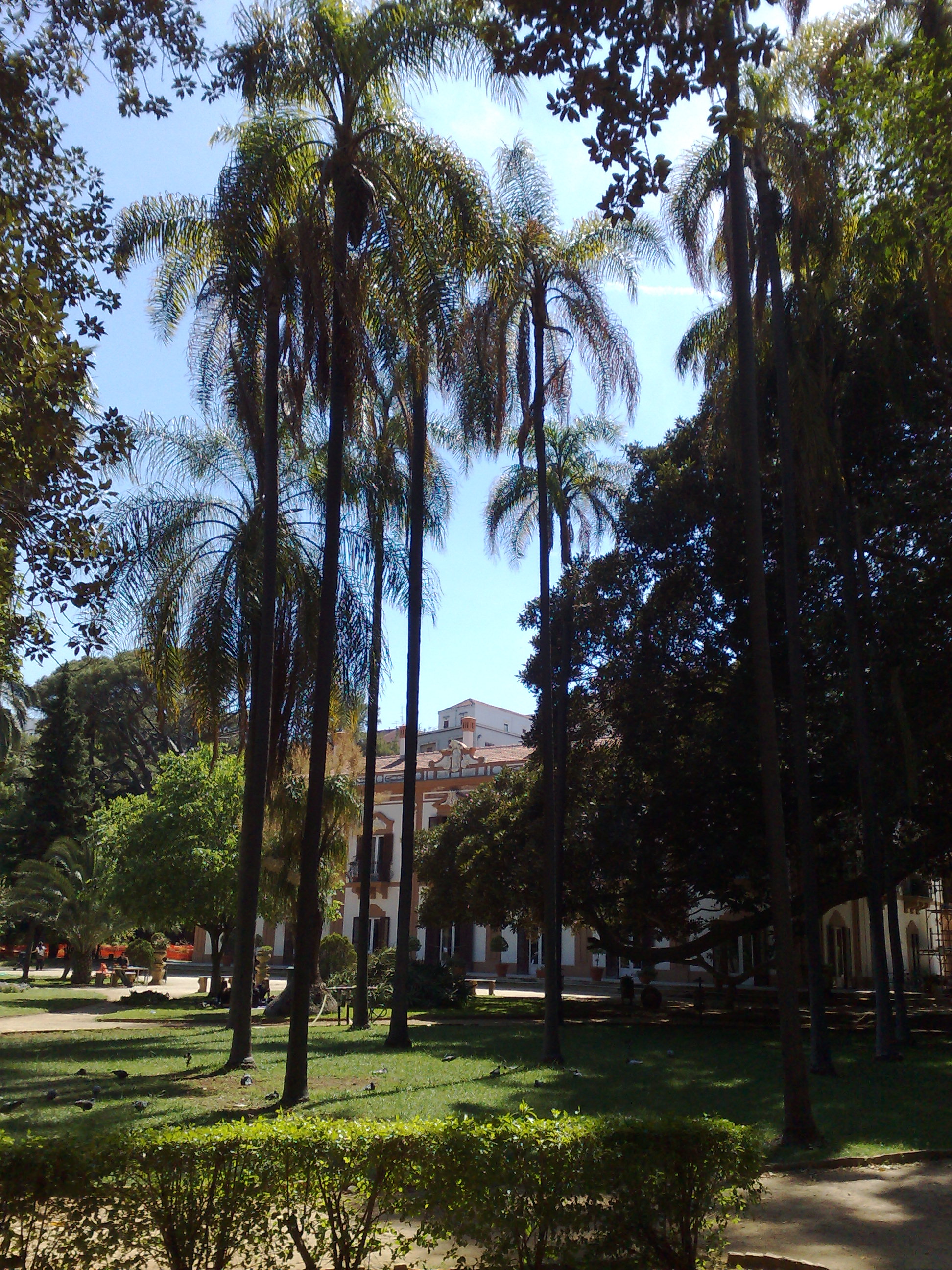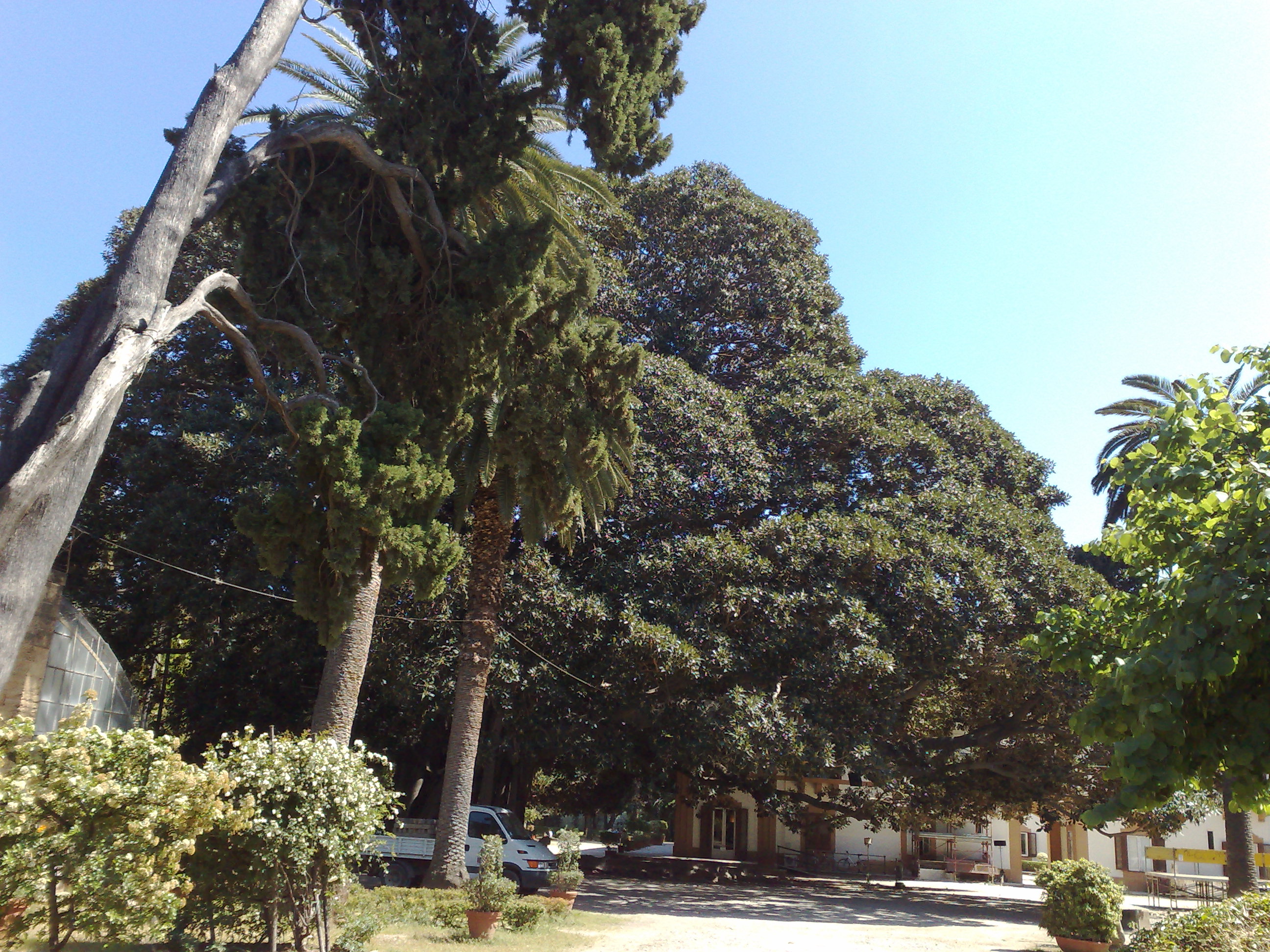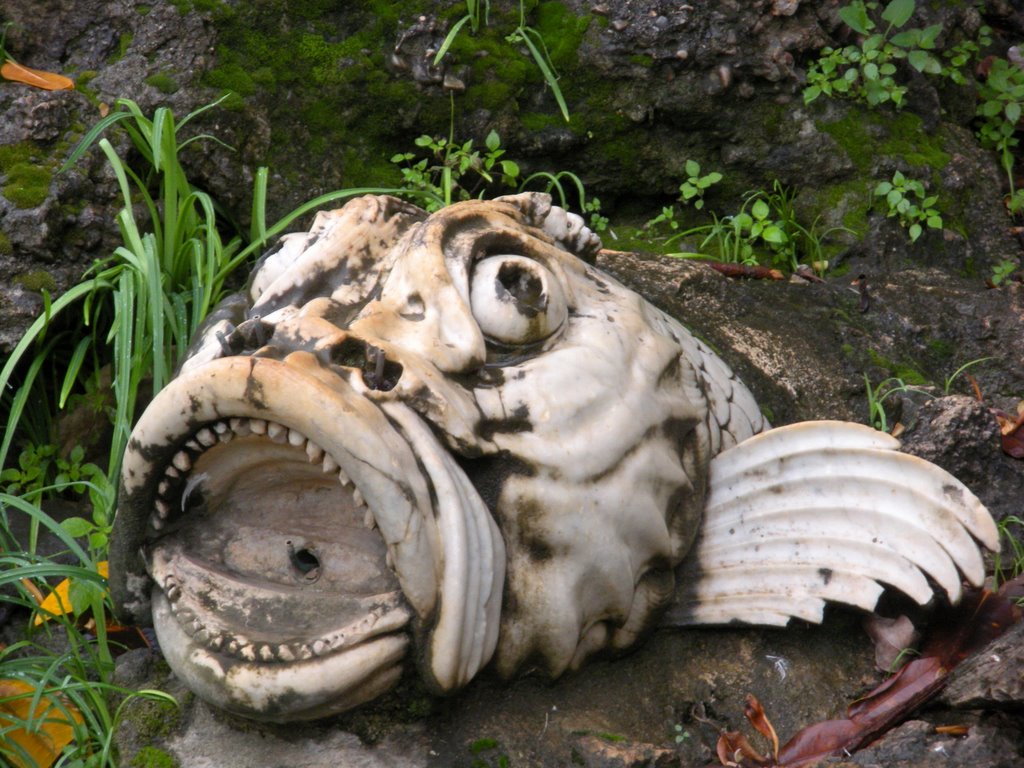
Villa Trabia
This post is also available in:
 Italiano (Italian)
Italiano (Italian)
A few steps from the centre of Palermo is Villa Trabia, a green estate within the city, with rich vegetation that includes some centuries-old magnolias. The structure, also known as “Casena dei Trabia alle Terre Rosse”, includes an XVIII century villa and a XVII century park. The residential building consists of the main body on two levels and two side wings that delimit a small courtyard.
The park, rich in sculptures and fountains, one of which dates back to the XVII century, features a natural set of different heights, joined by a baroque-style bridge.
HISTORY
In the early XVIII century, the convent of S. Francesco di Paola owned a rustic house outside the city walls. In the middle of that century, that very building was bought by Paolo Spinelli, who transformed it into a suburban villa with a garden.
In 1771, Ottavio Gaetani and Lanza, Marquis of Sortino and Prince of Cassaro, bought the property, making important changes to the garden, including the addition of some furnishings and new botanical species. In 1809, the villa became one of the properties of the Prince of Trabia, Giuseppe Lanza and Branciforti, who redesigned the old garden, creating, in 1814, some geometric parterres.
The residential building was then renovated between the end of the XIX century and the beginning of the XX century by the architect Giuseppe Patricolo. At the same time, the head gardener Vincenzo Ostinelli renovated and expanded the garden, transforming it into a botanical garden.
Following the demise of the last princess of Trabia and Butera, Giulia Florio, in 1949, the villa and the park were abandoned until the 1970s. In 1984, the local municipality acquired the whole estate. Today, the Villa is the seat of Palermo’s Department of Culture and houses a library on its ground floor. In summer, it is used for various cultural events.
THE GARDEN
Structured like a botanical garden, it houses many exotic and Mediterranean species, such as Robinia pseudoacacia, Araucaria araucana, Nerium oleander, Ficus magnolioides, several oaks, conifers and palms.
In 1910, 2790 species of plants were registered, although today only 150 remain.
This post is also available in:
 Italiano (Italian)
Italiano (Italian)
Contatti
Via Antonino Salinas 3 - Palermo(PA)
091 8431605
didattica@palermocultura.it
http://www.palermoweb.com/cittadelsole/monumenti/villa_trabia.htm
Altre info
Gratuito
Visite guidate su prenotazione
Dalle 8.00 alle 19.00
